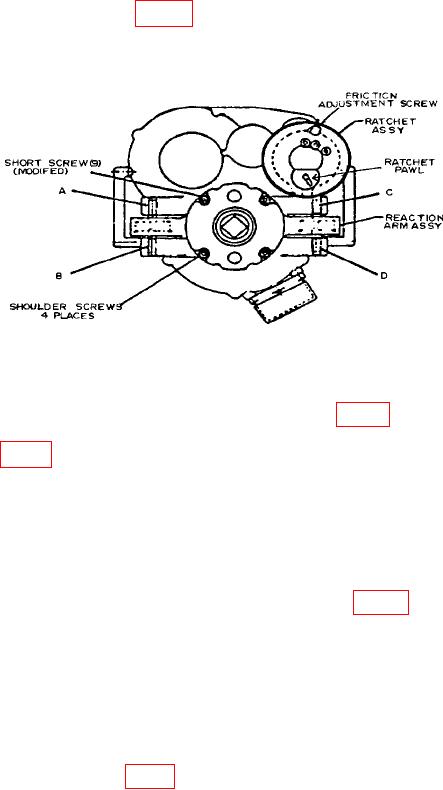
TB 9-5120-212-24
12. Torque
a. Performance Check
WARNING
Friction brake must be adjusted to hold 1200 ft-lbs applied
torque when pressure is released from T-handle.
(1) Check friction brake by carefully applying torque in small increments and
ensuring that friction brake holds up to 1200 ft-lbs. If friction brake does not hold, tighten
FRICTION ADJUSTMENT SCREW (fig. 4) to increase friction. Do not over-tighten
because the friction brake must be overcome to back off torque that has been applied.
Maximum torque needed to overcome brake should not exceed 75 ft-lbs.
Figure 4. Torque Wrench - Adjustment Locations.
CAUTION
Do not attempt to reverse the RATCHET PAWL (fig. 4) with
torque applied. When torque is applied cw with RATCHET
PAWL (fig. 4) in nut-on position, the T-handle must be turned
ccw against resistance of the friction brake to release the
applied torque.
NOTE
Two ratchets are used on this TI, one on the torque wrench and
one on the T-handle. Operation of the T-handle ratchet is
obvious. The torque wrench ratchet operates in conjunction
with the friction brake. The RATCHET PAWL (fig. 4) is
labeled nut-on for cw torque and nut-off for ccw torque.
(2) Exercise TI and torque cell scale three times in cw direction.
(3) Press the F4 key on the force/torque indicator until →0← soft key is displayed.
Press the →0← soft key to zero force/torque indicator.
(4) Check cw and ccw balance of TI as follows:
(a) Set RATCHET PAWL (fig. 4) to nut-on position.

